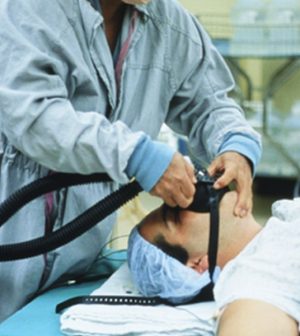- Understanding the Connection Between Anxiety and Depression
- How Daily Prunes Can Influence Cholesterol and Inflammation
- When to Take B12 for Better Absorption and Energy
- Epsom Salts: Health Benefits and Uses
- See What Saffron Can Do for Sleep and Heart Health
- 6 Common Mistakes to Avoid Before Your Physical
- Can Sweating Really Help You Beat a Cold?
- Strengthening Your Relationship: Practical Strategies
- Skip Storing This Everyday Product in the Fridge Door
- Green Tea + B3 Pairing May Boost Brain Health
Does Less-Invasive Surgery Make Sense for You?

Among the most significant advances in surgery has been the development of laparoscopic — or minimally invasive — procedures.
These are new ways to perform many standard operations, with a few, very small incisions, often barely a half-inch long, compared to traditional so-called open surgery with one incision several inches long.
To perform an operation this way, the surgeon inserts a laparoscope, a thin tube with a tiny camera at the tip, through one incision to visualize the area of concern. Images from the camera are seen on a monitor. The surgeon uses them to guide tiny surgical instruments through other incisions and do the operation.
A few small incisions can mean less pain, fewer visible scars and potentially faster healing. You can often go home the same day and get back to many normal activities sooner. There’s also less chance of internal scar tissue, called adhesions, which can be painful.
For the surgeon, one advantage is that the images are magnified on the monitor, making it easier to see organs and tissues. However, laparoscopic procedures can take longer than open surgery, and longer time under anesthesia may increase the risk of complications, such as internal bleeding or infection, which might take days or weeks to appear.
While many complex surgeries must be done the traditional way, minimally invasive surgery is now routine for many health issues.
Laparoscopic surgery is available for:
- Many gynecological and urinary procedures.
- Hernia repair.
- Gallbladder removal.
- Some infertility treatments.
- Bariatric, prostate and some colon surgeries.
Always check the credentials of your surgeon. While many learned this technique as part of their medical education, more senior surgeons must go for special training to learn it. Always ask how many times the surgeon has performed the procedure you need before you agree to it. Typically, the more the better.
More information
The American College of Obstetricians and Gynecologists has more on laparoscopy, from its benefits to what recovery is like.
Source: HealthDay
Copyright © 2026 HealthDay. All rights reserved.










